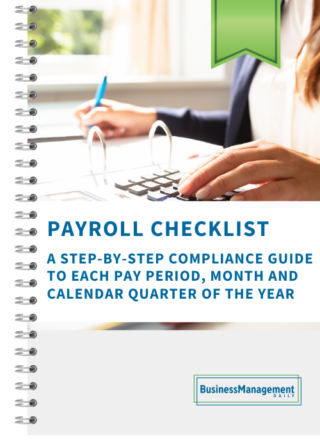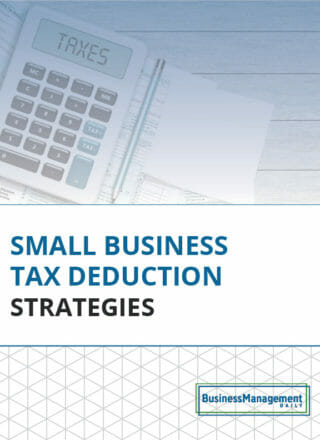Payroll
Implement payroll programs that pay off with details on payroll processing and tips on timesheets. Our experts break down everything from how to start a payroll in a new business to payroll management for a large corporation.
How do I start paying employees?
Check with your state’s revenue agency for guidelines on state and local income tax withholding. Determine a payday. You may compensate employees more frequently than state law dictates, but not less.
When your first employee starts working for you, give them a W-4 to complete for federal income tax withholding purposes. Classify the employee as either exempt or nonexempt.
Then, complete new hire reporting – this allows enables state agencies to issue child support withholding orders. Federal law requires you to submit the employer name, address and federal employer identification number, as well as the employee’s name, address, Social Security number and date of hire.
How do I rectify pay errors?
The FLSA doesn’t say specifically when pay mistakes should be corrected, but it does give employers one pay period to figure overtime pay if that pay can’t be included in an employee’s current paycheck. Some states may require a slightly speedier resolution.
FLSA regulations provide a safe harbor when errors occur when paying exempt employees. To claim this safe harbor protection, you must:
- have a clearly communicated policy prohibiting the improper deduction
- have a procedure for the employee to complain
- reimburse employees fully
- make a good-faith commitment to comply with the law in the future.
As for your clearly communicated policy, it’s sufficient to simply write that you intend to pay exempt employees on a salary basis and will not make deductions from their salary that the FLSA prohibits. Your policy should also include information about how employees can go about lodging complaints.
How do I handle termination pay?
Always apply the most stringent state law, which means to pay immediately. Be sure that the payroll department is notified of the involuntary termination timeline. If you can’t comply with state law, suspend the employee with pay until you can collect the data you’ll need to cut the final check. You should also develop a termination checklist. That will help with your due diligence should a state labor department come knocking.There is no law that requires employees to give two weeks’ notice of their leaving.
By and large, when an employee quits, state laws say that you can pay the last check at the next regular payday. You’re safe with that standard in the handful of states that don’t have final pay laws.
You can usually take all the regular deductions from a final check, but there’s more to consider. It’s important to understand company policy and state law on paying commissions and draws against commissions; state laws on paying accrued vacation, bonuses and PTO time; and how to handle employees who terminate with negative PTO balances.
Technically, you’ve advanced the employee time, and now you’re owed a debt. In the Department of Labor’s Field Operations Handbook, it is written that you can make deductions for this negative time even if employees are left with less than minimum wage.
Even employees who are fired may have accrued leave time in their banks. Whether you have to cash that out is also controlled by state laws. Most states don’t require you to cash out accrued sick time, but remember that PTO banks don’t make distinctions between vacation and sick time. If you use them, you’ll probably be cashing out all of the employees’ time, even their sick time.
How do I handle a payroll audit?
Do not be hostile to auditors/investigators who come onto your premises, and do not lie or manufacture documents. Be transparent and alert all employees to the auditor’s/investigator’s presence.
Respond to document requests promptly and keep copies of all correspondence you send to the IRS/DOL. Organize requested documents: Time records, wage calculations, policies, job descriptions. Forms 941, 940, W-4 and W-2/W-3 should be collated and coordinated with documentation that backs up entries on them. All totals must agree. Have supporting documents (e.g., T&E reports, general ledger).
What are the basics of reimbursing employee expenses?
Section 274(d) of the Tax Code and its accompanying regulations set up the administrative framework for paying and reimbursing employees’ business expenses. These are called the accountable plan rules. If you have an accountable plan, then your reimbursements to employees for their business expenses are tax-free. To have an accountable plan, employees must meet three tests:
- They must have paid or incurred deductible expenses while working for you. In other words, there must be a business connection.
- They must adequately account to you for these expenses within a reasonable period of time.
- They must return excess reimbursements or allowances to you within a reasonable period of time.
Plans that require employees to substantiate their expenses and to return excess amounts but lack a business connection will fail the accountable plan rule. Generally, you will have a business connection if the expenses that employees incur are either directly related to your business or associated with your business.























